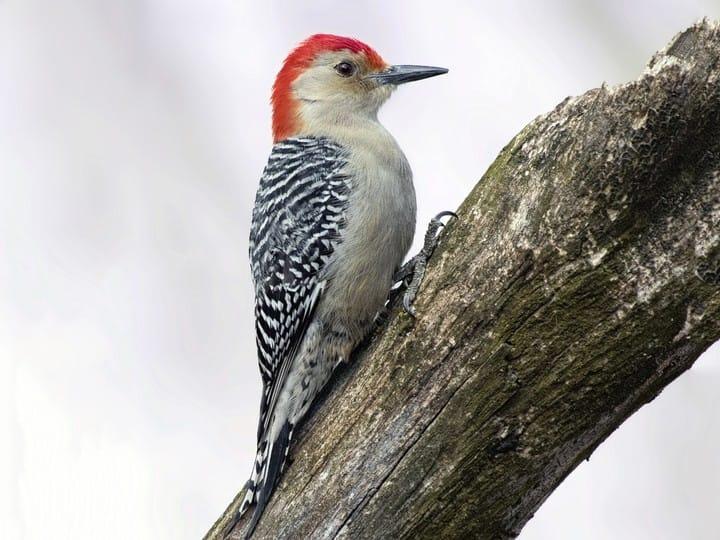Woodpeckers in Florida: Recognition Tips and Environment Preferences
Woodpeckers in Florida: Recognition Tips and Environment Preferences
Blog Article
Woodpeckers Unleashed: Discovering the Wonders of These Competent Tree Mountain Climbers
Woodpeckers, with their unique markings and rhythmic drumming echoing through wooded locations, hold an unique place in the bird world. Their specialized makeup and adjustments enable them to browse vertical surfaces with exceptional ability. Their mastery of tree climbing is simply one aspect of their interesting behavior. As we look into the elaborate information of woodpeckers' nesting behaviors, feeding strategies, and the continuous conservation efforts to secure these exceptional birds, a much deeper gratitude for their area in nature unfolds.
Anatomy and Adaptations
When checking out the makeup and adaptations of woodpeckers, one can observe amazing functions that allow these birds to prosper in their specialized environmental specific niche. In addition, woodpeckers have zygodactyl feet, with two toes encountering forward and two encountering in reverse, giving a company hold on tree trunks while they search for food or drum for communication.
In addition, woodpeckers have a distinct tongue framework that is long, barbed, and sticky, enabling them to draw out bugs from gaps in wood. This specialized adaptation permits woodpeckers to exploit a food resource that is inaccessible to lots of other bird species. Overall, the composition and adjustments of woodpeckers showcase the remarkable evolutionary options that have allowed these birds to flourish in their arboreal environment.
Drumming Behavior
Having explored the composition and adjustments of woodpeckers, the focus now moves to understanding their drumming habits, a distinct element of their interaction and territorial displays. Drumming is an essential form of interaction amongst woodpeckers, serving several objectives such as establishing areas, drawing in companions, and signaling alarm. Each woodpecker varieties has a special drumming pattern that aids people identify members of their very own species and distinguish them from rivals or killers.
Woodpeckers generate drumming noises by quickly pecking on resonant surface areas such as dead trees, energy posts, and even metal items, producing a collection of rhythmic beats. The intensity and rate of drumming can differ based upon the function; for circumstances, a fast drumming sequence may signify hostility in the direction of intruders, while a slower and softer drumming pattern can indicate courtship (Woodpeckers in Florida). Additionally, woodpeckers may adjust the regularity and period of their drumming to share details messages effectively
Nesting Behaviors
Discovering the nesting routines of woodpeckers reveals remarkable insights into their reproductive habits and habitat options. Woodpeckers are recognized for their distinct nesting choices, commonly digging deep into tooth cavities in trees to produce protected rooms for increasing their young. These tooth cavities offer not only as a nesting website yet additionally as a safe refuge from killers and stormy weather.
Woodpeckers show a high degree of integrity to their nesting websites, commonly returning to the same area year after year. This habits highlights the importance of ideal habitat schedule for their reproductive success. The option of a nesting website is vital for woodpeckers, with aspects such as tree varieties, height, and degeneration stage playing considerable roles in their decision-making procedure.
Interestingly, some woodpecker varieties are recognized to excavate numerous tooth cavities within their area, offering themselves with different nesting alternatives. This approach may function as a type of insurance versus potential threats or disruptions to their primary nesting site.

Feeding Techniques
Woodpeckers utilize a range of specialized feeding techniques to acquire their key food resources. Among the most distinct feeding actions of woodpeckers is drumming, which includes rapid pecking on trees to discover pests under the bark. This drumming not just assists them locate target however additionally works as a means of interaction with other woodpeckers. Woodpeckers have strong, chisel-like beaks that enable them to pierce into wood effortlessly. When a hole is click here now developed, they use their long, barbed tongues to remove bugs such as ants, beetles, larvae, and crawlers. These tongues are coated with sticky saliva that helps trap the victim. Woodpeckers are likewise recognized to excavate cavities in trees to accessibility hidden insect larvae or sap. Some varieties, like the acorn woodpecker, shop nuts in specially created openings called granaries. This strategic storing of food aids them survive throughout food deficiency periods. Woodpeckers are really exceptional in their feeding methods, showcasing flexibility and intelligence in acquiring their nourishment.
Conservation Initiatives
Among the intricate feeding techniques showed by woodpeckers, the preservation efforts focused on protecting these remarkable visit their website birds play an important function in maintaining their environments and populaces. Woodpeckers face various dangers to their survival, including habitat loss because of logging, climate change modifying their environments, and collisions with man-made structures such as structures and automobiles - Woodpeckers in Florida. Conservationists are proactively working to deal with these challenges and ensure the long-lasting wellness of woodpecker types

Education and learning and public understanding campaigns are likewise essential components of woodpecker preservation efforts. By increasing understanding about the value of these birds in maintaining healthy woodland environments, preservationists can gather assistance for habitat conservation campaigns and promote responsible land monitoring techniques. Via collaborative initiatives in between scientists, policymakers, and local neighborhoods, we can interact to safeguard a future where woodpeckers prosper in their all-natural environments.
Final Thought

Report this page